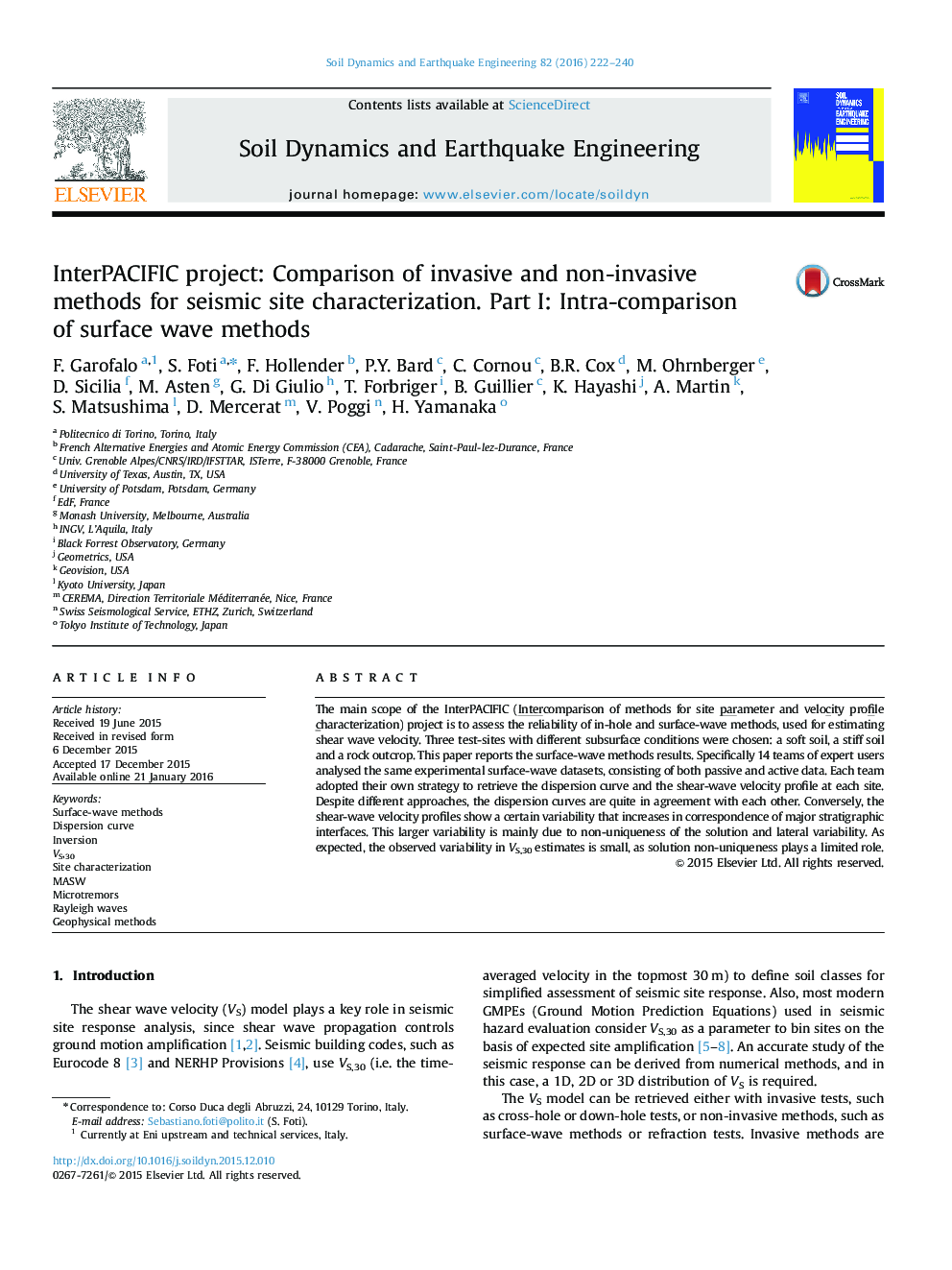| Article ID | Journal | Published Year | Pages | File Type |
|---|---|---|---|---|
| 303937 | Soil Dynamics and Earthquake Engineering | 2016 | 19 Pages |
•Variability of surface wave analysis results are studied with a blind test.•Three subsoil conditions are considered: soft soil, stiff soil, rock outcrop.•Different methods are used to analyze active and passive data.•A low variability is observed on the estimates of the experimental dispersion curve.•Variability in VS profiles is due to parameterization and solution non-uniqueness.
The main scope of the InterPACIFIC (Intercomparison of methods for site parameter and velocity profile characterization) project is to assess the reliability of in-hole and surface-wave methods, used for estimating shear wave velocity. Three test-sites with different subsurface conditions were chosen: a soft soil, a stiff soil and a rock outcrop. This paper reports the surface-wave methods results. Specifically 14 teams of expert users analysed the same experimental surface-wave datasets, consisting of both passive and active data. Each team adopted their own strategy to retrieve the dispersion curve and the shear-wave velocity profile at each site. Despite different approaches, the dispersion curves are quite in agreement with each other. Conversely, the shear-wave velocity profiles show a certain variability that increases in correspondence of major stratigraphic interfaces. This larger variability is mainly due to non-uniqueness of the solution and lateral variability. As expected, the observed variability in VS,30 estimates is small, as solution non-uniqueness plays a limited role.
